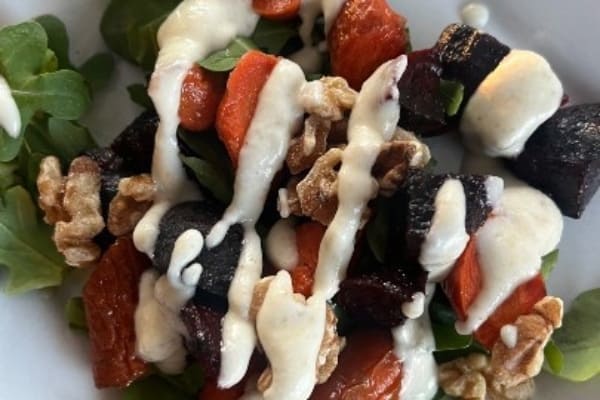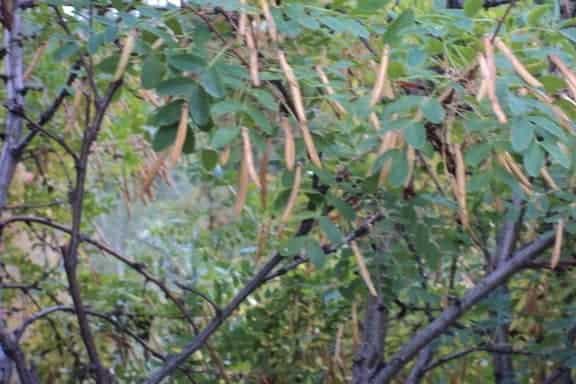When we moved to Whitehorse, from Saskatchewan, I had been led to believe that gardening here was next to impossible. Then I visited Yukon Gardens and was inspired.
They had all the ‘regular’ garden plants that seemed to be doing very well. That’s when I knew it wasn’t impossible.
But it was still years before I had a garden of my own. You see, we had been living in a newly developed area where there truly was nothing but clay, gravel and trees.
Nine years ago, we moved to some agricultural land north of town and we were finally able to have our own garden. Of course, that first summer we weren’t able to choose what types of veggies were in the garden as it had been planted already.
But, the following Christmas … the first seed catalogues arrived. I could start picking and choosing varieties and dreaming of spring.
That’s right, Christmas (more specifically, winter) is seed-catalogue season.
Now I knew that to grow vegetables here in the North I would have to look for different traits than in my prairie-garden varieties.
So, for my first order I concentrated on short-season crops, and they didn’t turn out too badly. But over the years I have been fine-tuning that, looking for plants that wouldn’t just survive here in the North, but would actually thrive.
That’s when I found spinach that is slow to bolt (go to seed), and carrots that grow at -5 (made for our summers).
I even found corn seed that would not only grow and produce corn cobs here, without a green house, but would also mature the cobs and produce viable seed.
Seed catalogues provide far more than just a selection of seeds for our harsh, demanding climate. They give us a taste of summer – and a ‘picture’ – of a cornucopia of vegetables bursting with colour and promise, something we all need during cold January days.
So every winter for the past few years, I map out my garden and decide what to plant. Sometimes I choose varieties that have proven to do well here. And sometimes I take a chance on something that sounds like it might work.
I am often pleasantly surprised and add it to the list of varieties that work.
Through trial and error, I have made some interesting discoveries.
One year I tried Sangria lettuce, a variety of butterhead lettuce edged in a dark, reddish leaf. I planted it in two different locations, one with considerably more shelter than the other.
The sheltered plants produced less red edging on their leaves while the plants that battled the wind were a dark burgundy red.
Sangria is also very frost hardy. It has become a constant in my garden and I continue to plant it in locations where it will turn the darker red.
Since then I have tried a dark-purple romaine that is equally hardy.
When I look through new varieties, I keep this in mind. This hardiness that is related to colour seems to apply to a multitude of vegetables: purple cabbage, red kale, purple beans, leeks with bluish leaves and even a violet cauliflower.
But not all frost-hardy varieties are a purple hue. I found that, with swiss chard, golden varieties do better than red ones.
While the rest of the country looks for heat-tolerant vegetables, we need to focus on varieties that can take a frost every week of the summer if they have to.
As a gardener, raised on the prairies, I was taught that the May long-weekend was when the garden got planted. That doesn’t work here.
Some years, we have had nice warm weather at the end of April and beginning of May. One particularly nice year I decided I couldn’t wait for the long weekend, so I planted during the last week in April.
I figured if I could work the soil and the seed package said “Plant as soon as the soil can be worked”, then I would plant it.
We have such short summers that every little bit helps in the development and maturing of some vegetables. While our last frost-free dates are at the beginning of June, some plants don’t mind a bit of frost while they are starting out. Peas are one of those that actually need 0-degree temperatures to germinate. And in early May we definitely get those cold evenings.
Of course, just because I live in the Yukon doesn’t mean I must confine myself to cold-weather crops. I like to push the limits of what can be grown.
A few years ago, I went to an agricultural conference in the B.C. Interior. At the trade show, there was someone selling seeds. So, knowing I had already ordered and received my main seeds for that year, I looked for something to experiment with.
As I was making my purchase, a friend looked at my seeds and laughed.
You see, I had chosen corn and tobacco seeds and both require heat units to properly develop, but they actually did quite well that year. And it was this corn that actually produced cobs that matured to viable seed.
I was thrilled.
Because of these kinds of successes, I continue to push the boundaries of what is able to be grown in the Yukon.
And if something doesn’t work, well, there is always next year.


